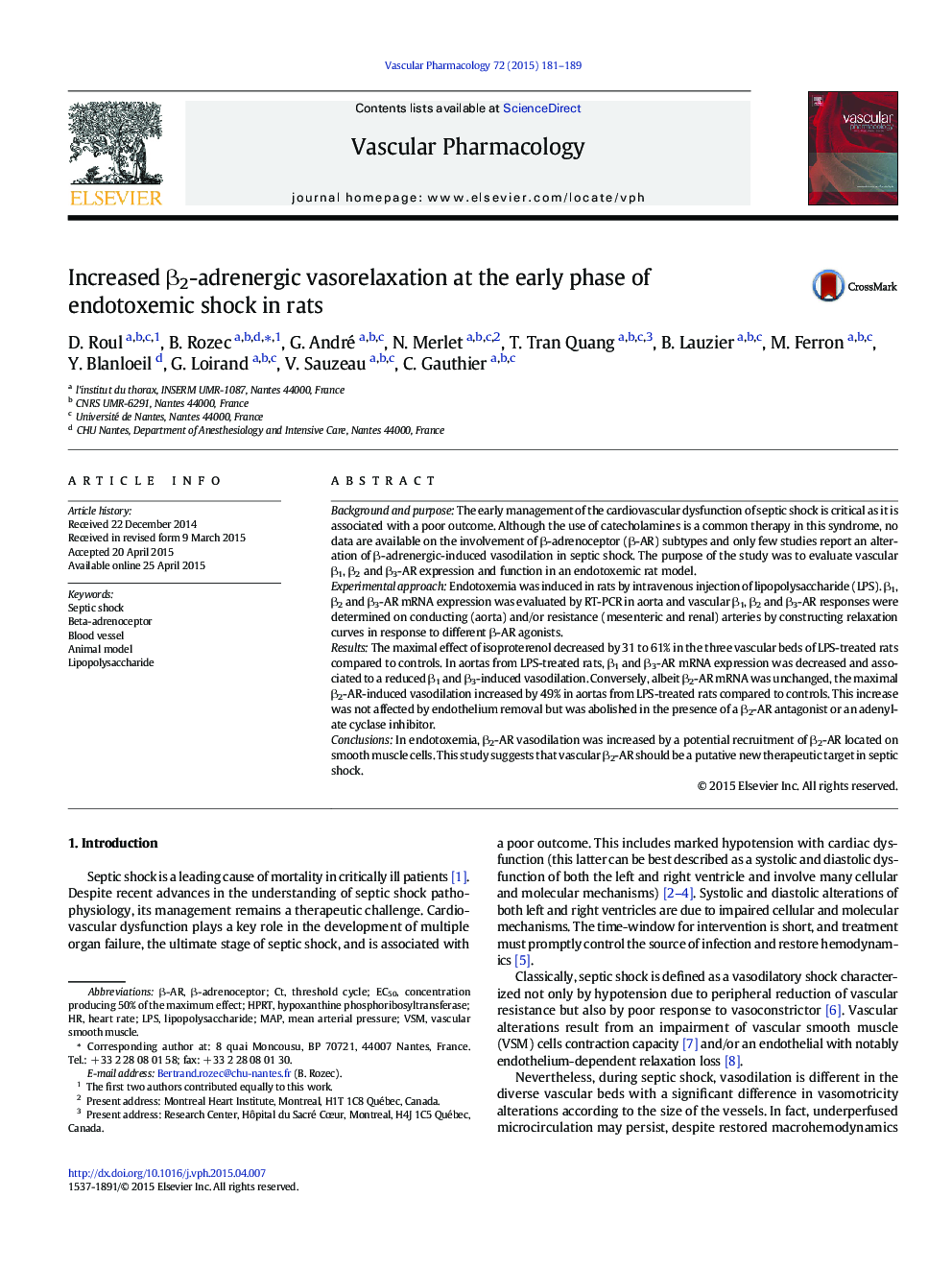| Article ID | Journal | Published Year | Pages | File Type |
|---|---|---|---|---|
| 2574003 | Vascular Pharmacology | 2015 | 9 Pages |
Background and purposeThe early management of the cardiovascular dysfunction of septic shock is critical as it is associated with a poor outcome. Although the use of catecholamines is a common therapy in this syndrome, no data are available on the involvement of β-adrenoceptor (β-AR) subtypes and only few studies report an alteration of β-adrenergic-induced vasodilation in septic shock. The purpose of the study was to evaluate vascular β1, β2 and β3-AR expression and function in an endotoxemic rat model.Experimental approachEndotoxemia was induced in rats by intravenous injection of lipopolysaccharide (LPS). β1, β2 and β3-AR mRNA expression was evaluated by RT-PCR in aorta and vascular β1, β2 and β3-AR responses were determined on conducting (aorta) and/or resistance (mesenteric and renal) arteries by constructing relaxation curves in response to different β-AR agonists.ResultsThe maximal effect of isoproterenol decreased by 31 to 61% in the three vascular beds of LPS-treated rats compared to controls. In aortas from LPS-treated rats, β1 and β3-AR mRNA expression was decreased and associated to a reduced β1 and β3-induced vasodilation. Conversely, albeit β2-AR mRNA was unchanged, the maximal β2-AR-induced vasodilation increased by 49% in aortas from LPS-treated rats compared to controls. This increase was not affected by endothelium removal but was abolished in the presence of a β2-AR antagonist or an adenylate cyclase inhibitor.ConclusionsIn endotoxemia, β2-AR vasodilation was increased by a potential recruitment of β2-AR located on smooth muscle cells. This study suggests that vascular β2-AR should be a putative new therapeutic target in septic shock.
Graphical abstractFigure optionsDownload full-size imageDownload high-quality image (195 K)Download as PowerPoint slide
